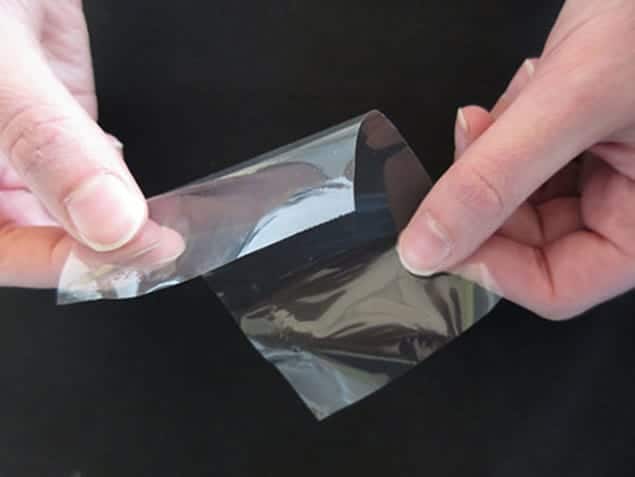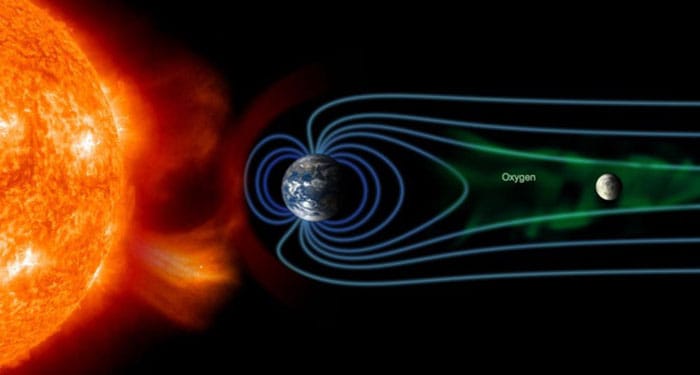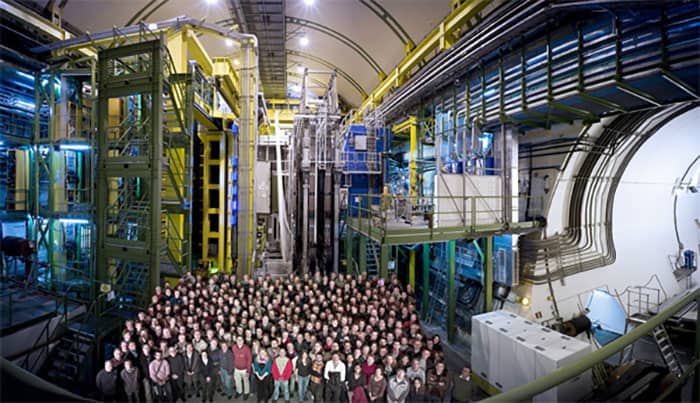Flash Physics is our daily pick of the latest need-to-know developments from the global physics community selected by Physics World‘s team of editors and reporters

Artificial skin has snake-like feelings
A new artificial skin can sense temperature changes like a pit viper senses its prey. Researchers from Caltech in the US and ETH Zürich in Switzerland have developed a flexible skin-like material out of pectin and water. The film generates an electrical response to temperature changes in a manner similar to the way pit vipers sense warm prey. The snakes’ pit organs contain ion channels in the cell membrane of its sensory nerve fibres. These expand with temperature increase, allowing the flow of calcium ions and therefore triggering electrical impulses. In comparison, the artificial skin releases calcium ions that are within the weakly bonded structure of pectin molecules. Chiara Daraio and colleagues suggest that the combination of increased ion concentration and increased ion mobility causes a decrease in electrical resistance. By testing over a range of 5–50 °C, the researchers found the skin could sense temperature changes of a mere 0.01 °C – almost 10 times more sensitive than existing electronic skins. The new skin can be as little as 20 μm thick and has many potential applications. It could be used on prosthetic limbs allowing amputees to sense temperature changes and, if included in first aid bandages, it could alert health professionals to temperature changes caused by wound infections. The team also plans to increase the functional temperature range so the skin can have industrial applications such as robotic skins and thermal sensors. However, this requires a new fabrication process because the water within the material bubbles and evaporates at high temperatures. The research will be published in Science Robotics on 1 February.
Earth’s footprint on the Moon

Oxygen from Earth’s atmosphere has been detected on the Moon’s surface. Scientists in Japan have analysed data from the lunar orbiter Kaguya taken when the spacecraft and the Moon were sheltered from solar winds by the Earth’s magnetosphere. For all but five days of the lunar orbit, the Moon is bombarded by solar wind. For those other five days, when the Earth lies between the Moon and Sun, the Earth’s magnetic field deflects the solar wind away from the Moon and ions from the Earth are able to reach the lunar surface. Previous studies analysing the Moon’s soils have shown the presence of terrestrial nitrogen and noble gases. Now, Kentaro Terada and colleagues have found evidence that oxygen from Earth’s biosphere also reaches the Moon. The orbiter Kaguya measured the mass and energy of oxygen ions reaching the Moon while it was sheltered from solar wind. It measured a significant number of oxygen ions when the Moon was within the Earth’s plasma sheet (the region of reduced magnetic field between the north and south lobes). The energy of the ions combined with the depth of oxygen in the lunar soil implies that the gas from Earth’s lower atmosphere has been depositing on the Moon since oxygen became abundant on Earth about 2.5 billion years ago. The findings, reported in Nature Astronomy, suggest that the lunar soil could provide a footprint of our planet’s ancient atmosphere, although Kentaro Terada and team stress that differentiating between solar and Earth winds will complicate the investigations.
Matter–antimatter asymmetry glimpsed in baryon decay

The first sighting of matter–antimatter asymmetry in the decay of a baryon has been reported by physicists working on the LHCb experiment at the Large Hadron Collider (LHC) at CERN. The finding is the first potential observation of the violation of charge-parity (CP) symmetry in a particle comprising three quarks and, if verified, could provide important clues about why there is much more matter than antimatter in the universe. The study looked at how bottom lambda baryons (comprising up, down and bottom quarks) and their antimatter counterparts decay after being created by collisions in the LHC. The team looked at about 6600 events in which the baryons (or antibaryons) decayed to create a proton and three pions (or corresponding antiparticles). It found that the spatial distribution of the matter and antimatter decay products was different at a statistical significance of 3.3σ. A similar measurement of about 1000 baryon (or antibaryon) decays that created a proton, pion and two kaons (or corresponding antiparticles) found no evidence for a matter–antimatter asymmetry. While 3.3σ is smaller than the 5σ required for a discovery in particle physics, this is the first measurement of these two decays and the statistics will improve as more data are collected – making it clearer with time if the asymmetry exists or not. CP violation was first seen in the decay of kaons in 1964 and more recently in B-meson decays – with both particles containing two quarks. In the Standard Model of particle physics, CP violation is explained by the Cabibbo–Kobayashi–Maskawa (CKM) mechanism. However, the CKM is not able to explain why there is more matter than antimatter, and therefore studies of CP violation in baryons could provide important clues towards solving this mystery. The study is described in Nature Physics.
- You can find all our daily Flash Physics posts in the website’s news section, as well as on Twitter and Facebook using #FlashPhysics. Tune in to physicsworld.com later today to read today’s extensive news story on later today to read today’s extensive news story on how skyrmions can be used to create artificial synapses.



